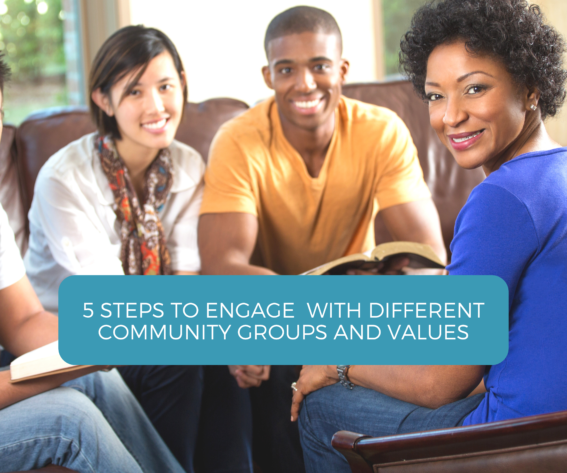

5 Steps to Communicate Value for Community Group Engagement
Community group engagement is important during the lifecycle of a project. It leads to showing respect for the different cultures and values toward stakeholder communities. The impact of not communicating effectively and respecting community values throughout all stages can significantly affect the company’s reputation.
Last year, a project in Victoria, Australia caused a major outcry on social media due to the bulldozing of tree that was sacred for Aboriginal people. It was cleared to make way for a highway. The 800-year-old tree was cut down for highway development, significantly damaging the reputation of the multi-million-dollar project and Roads Victoria brand.
To avoid and minimize the risk of community challenges, here are 5 steps you can follow to respectfully engage with different community groups.
1. Research land history, scope and significance before any planning on a project.
Don’t wait until the project is planned and in action to think about community group engagement. Effective prior research minimizes future challenges, issues or risks to the project’s completion. It is the responsibility at the research stage of the project to scope out all significance to the project’s impact on the local and greater community.
There are a few questions you may ask to help figure out the characteristics of your community and where your interests cross with local needs:
- What are the socio-economic and demographic characteristics of the area?
- What are the social, economic and environmental challenges or priorities in this neighbourhood?
- What is happening in terms of neighbourhood improvement and development?
- What is the foundation of local economic development?
- What employment growth strategies are promoted in the community?
2. Identify and analyze key stakeholders and community groups values early.
Early identification of who your stakeholders are is essential to project success. Using stakeholder mapping techniques you can identify the level of influence, impact and interest every stakeholder and community group have towards the project.
Once your contextual research and cultural asset mapping are completed, you should have a clear understanding of the important local challenges as well as the cultural and larger context in which you will be working. You will also be able to compile an overview of the local groups to engage and develop an implementation plan and schedule for consultation and engagement activities.
3. Build a Relationship
Community group engagement relies on building relationships. The first contact with key stakeholders and community groups is significant for understanding their values and building trust. When building a relationship be sure to:
- Engage in one-to-one conversations.
- Use the appropriate language and communicate with clarity and honesty.
- Seek to understand their world: beliefs, values, and perceptions of the project.
- Continuously demonstrate your competence and genuine interest in engaging with them.
4. Listen
The worst thing a project can do is engage with community groups and not listen. Not listening to the opinions and feedback of stakeholders and community groups can lead to legal challenges, could threaten project funding and approvals and negatively impact brand image and value.
Gathering community input may be beneficial to the project team in understanding community needs and challenges, or to get feedback on early ideas. It’s also a wonderful approach to see how well a new business or operational model is received, as well as new programming concepts. Here are some ideas for consultations:
- Interviews/Focus Groups/Roundtable Discussions
- Email/Web Surveys
- Request formal submissions
5. Create clear lines of communication
Building relationships and trust is a long-term investment. It’s important to have clear channels of communication – make it easy for the contact groups and key stakeholders to get in touch with you and keep them informed at all stages of your project. Even if there is nothing to report, it’s still important to let them know why things are stalled or delayed or what is happening behind the scenes with the project. Community group engagement ensures you show them how their input and participation it’s shaping the project decisions and outcomes. It’s really the most important step in building relationships and effective stakeholder engagement.
Learn more about community engagement, create your stakeholder engagement plan or contact us for help with setting up your stakeholder management system.

